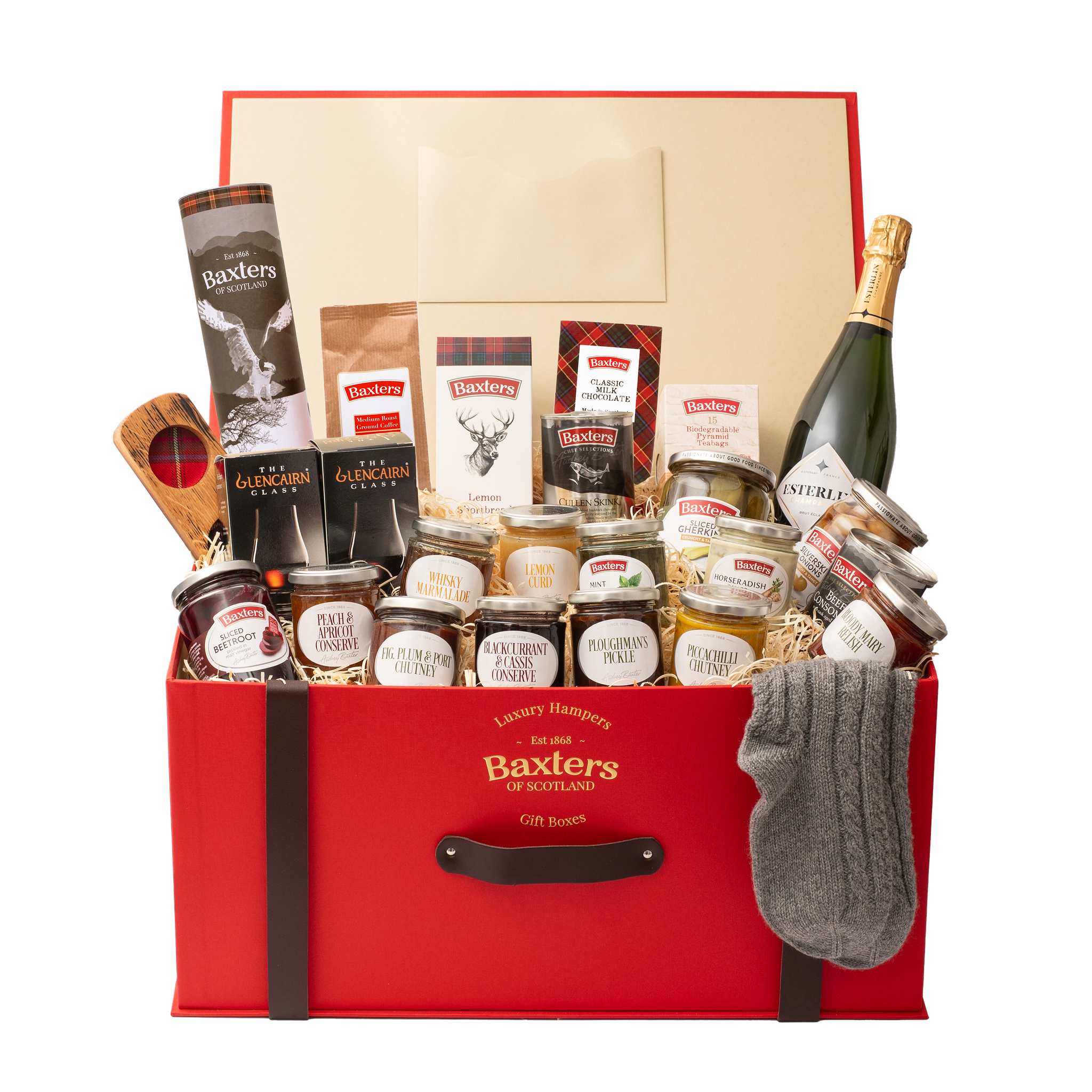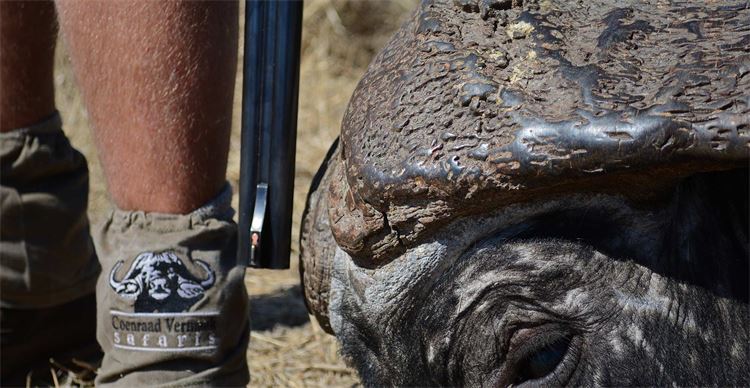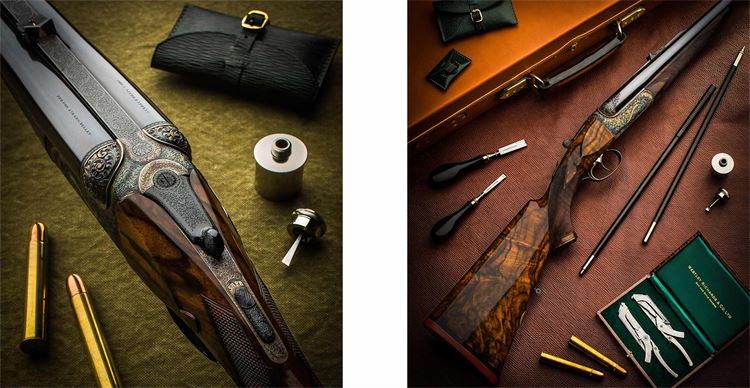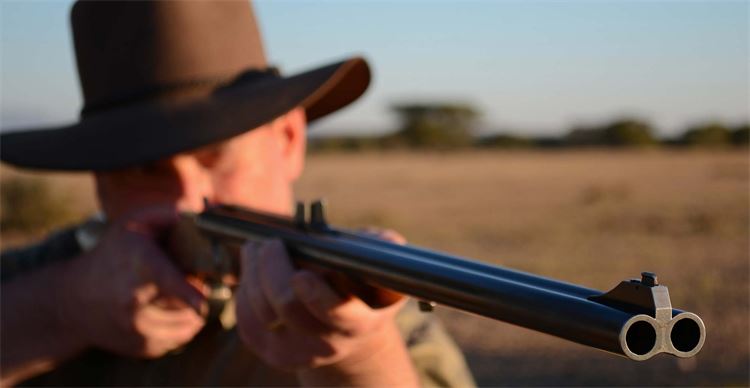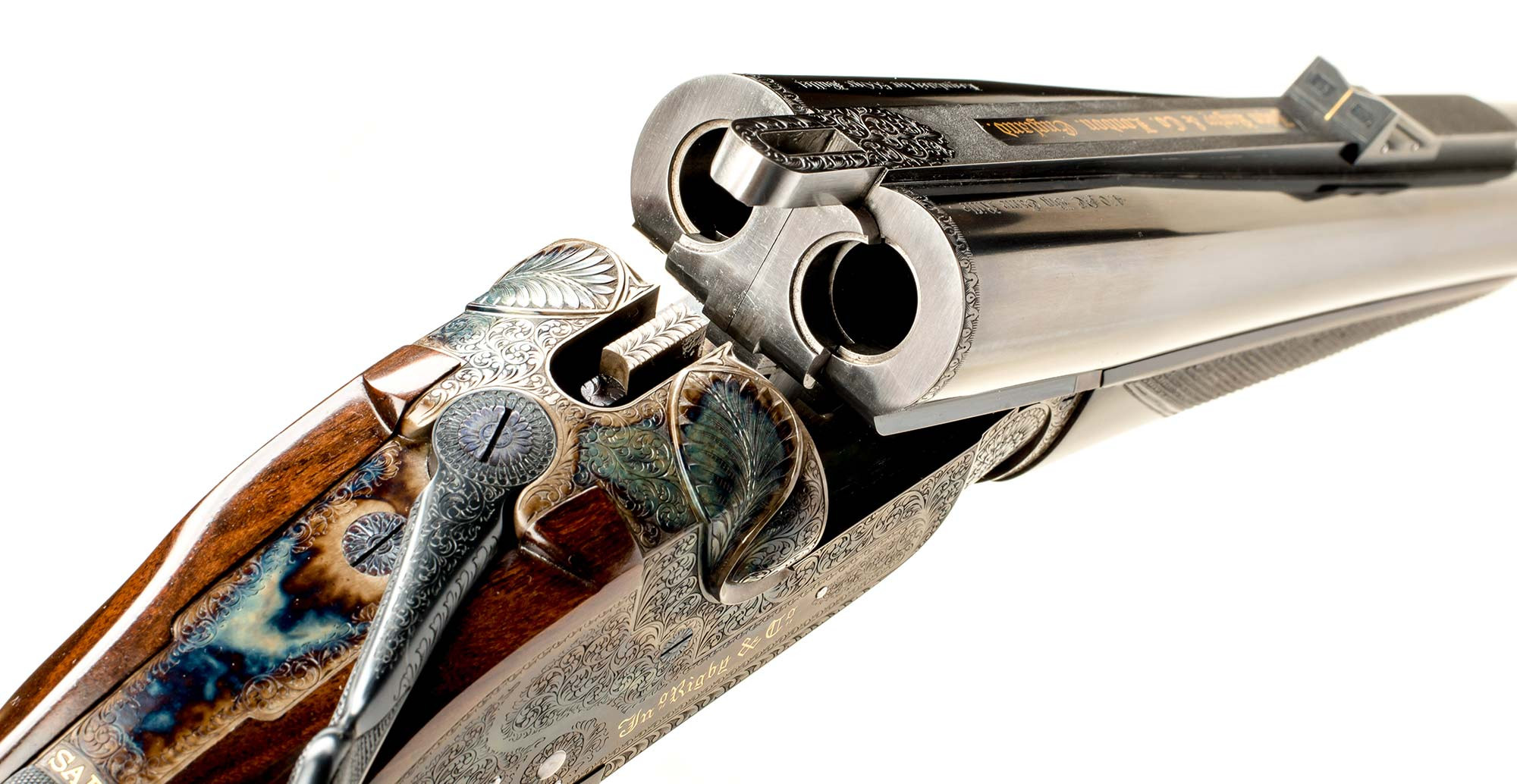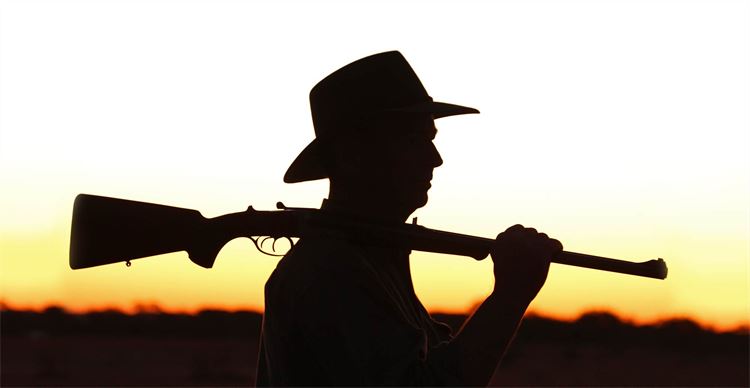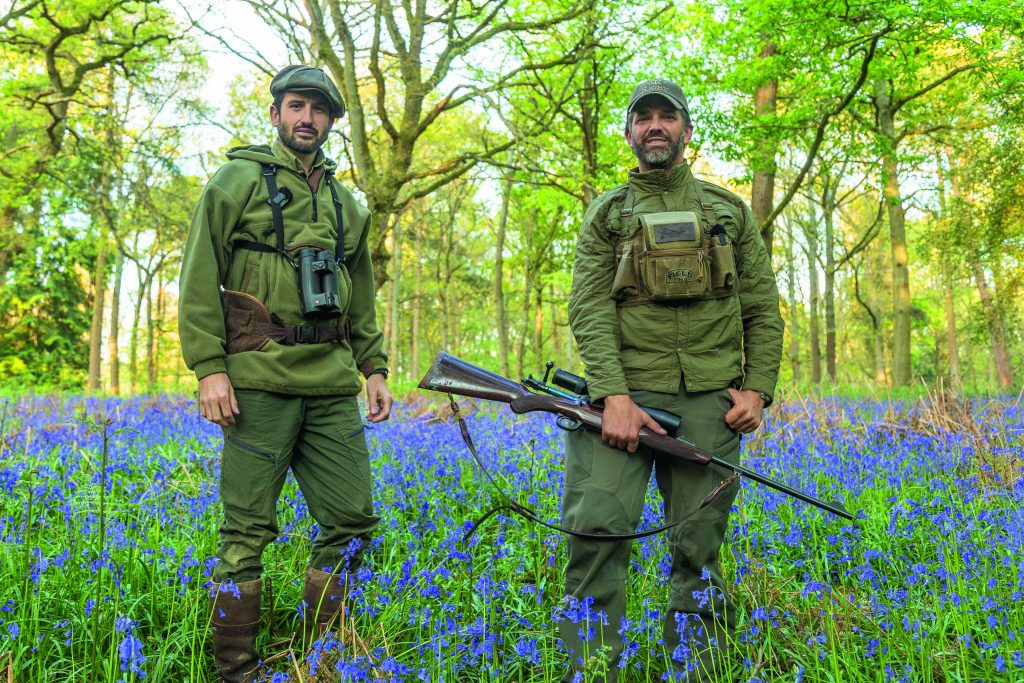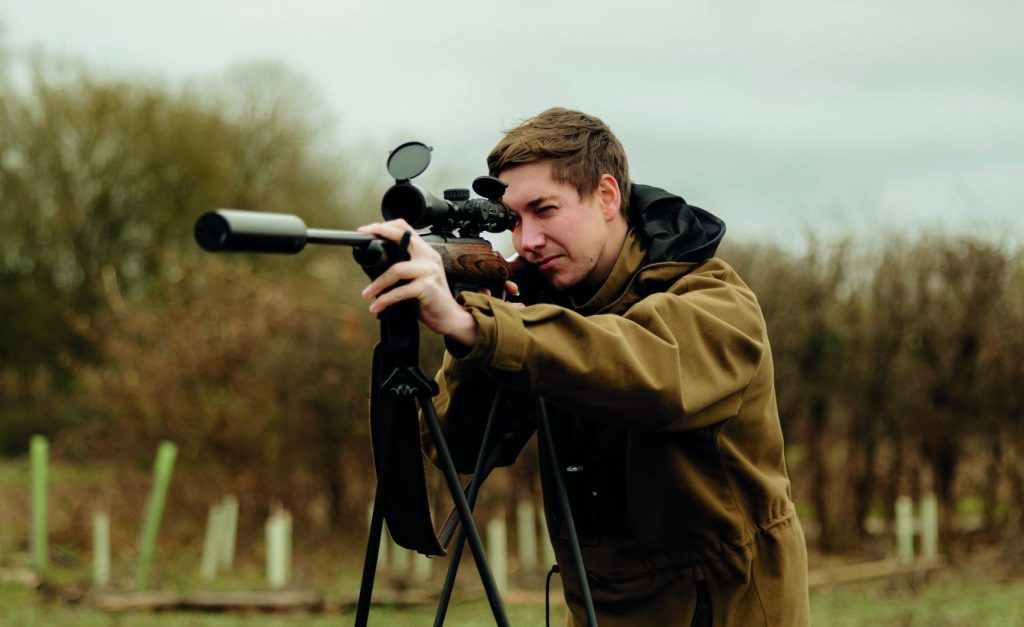Modern double rifles
The fall and rise of the double rifle.
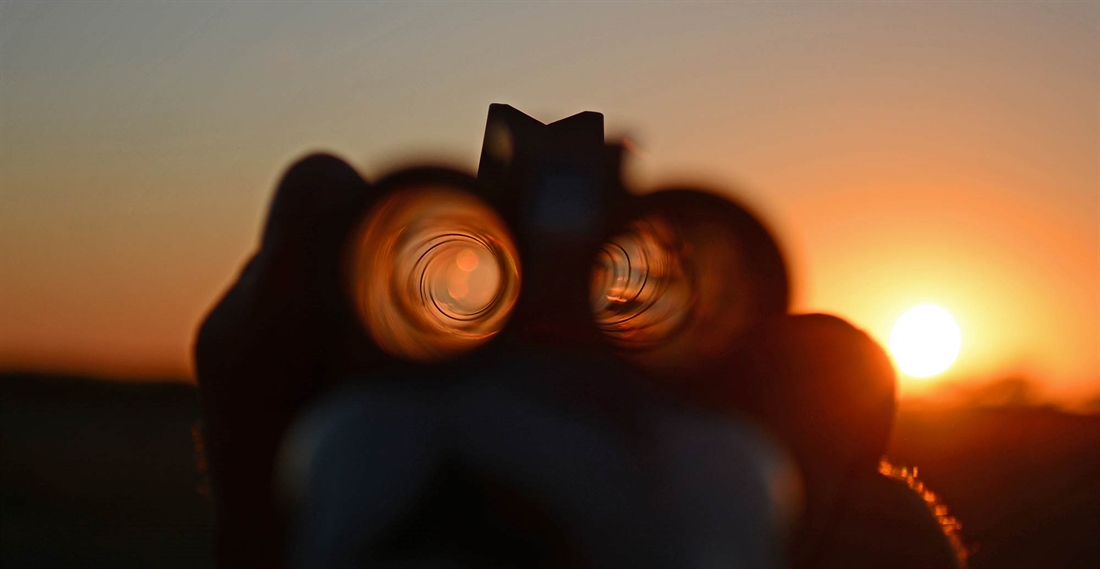
It’s Denys Finch Hatton in Out of Africa. It’s Jim Corbett and his Indian man-eaters. It’s Ernest Hemingway’s .577, the one that he planned to shoot German submarines with. It’s James Bond in Skyfall. It may be the weapon of choice for every khaki-clad PH that ever stalked out of a lazy Hollywood screenplay, but the double remains the quintessential adventure rifle. For history, charisma and romance nothing comes close.
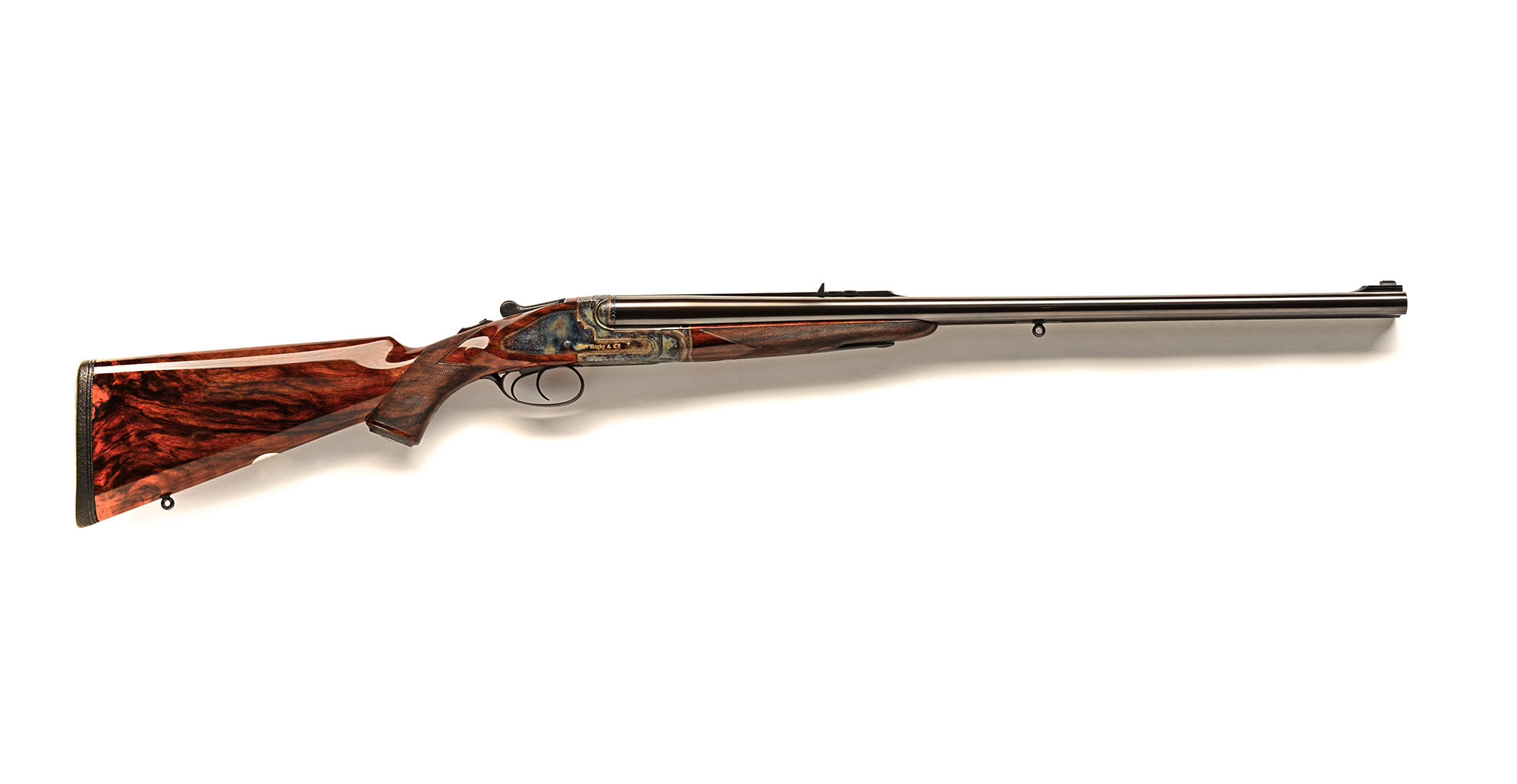
It’s remarkable that they are still with us at all. In I898 John Rigby created a .450 3¼ NE that outpaced the old black powder cannons and set the stage for the modern double rifle. It was an immediate hit but the competition was already up and running – in that very same year Peter Paul Mauser released his famous ’98 bolt action. In the long game the bolt is far cheaper to make and more flexible to configure. Hunters, plantation managers and second sons on a budget understood this as soon as the first big game bolt rifles appeared in Africa.
German colonists loved the 9.3×62. Brits fell for the .318 Westley Richards and various big Rigbys, including the .416. In the 1930s Winchester released the affordable Model 70 in .375 H&H and America fell in love. By the end of the Second World War, labour costs were rising and the safari industry was in the doldrums. With all that stacked against it the double should have been dead as mutton by the 1950s. It almost was.
The blows kept coming. Kynoch stopped making ammunition for the big nitro calibres, and with no cartridges available many rifles sat in cupboards for decades. This story, or a version of it, can be heard in every hunting country: an elderly lady asks a hunter if he would like to have her departed husband’s old shotgun for a hundred pounds, and it turns out to be a fine double rifle.
The big bolt was given a further boost by the magnums of Roy Weatherby and the introduction of affordable .458 rifles, but still the double just wouldn’t die. In fact a close look around the game fields of Africa today shows doubles in numbers not seen before in our lifetime. There are two reasons for that. The first is the massive upswing in the southern African safari industry. The second is that while the big side-by-side double may be a British tradition, it has been nostalgic sportsmen from the USA who have largely funded its renaissance. In recent years many professional hunters specialising in dangerous game have also taken to twin bores, and clients are now appearing with doubles that would have been bolt rifles a generation ago.
Is it because doubles are the ultimate in a close-quarters fistfight? That can get you an argument around any campfire, but the consensus seems to be a qualified yes. If one or two quick, instinctive shots are needed in close, the double has it in spades. However, it will always be a specialised tool best suited to the expert client or the professional.
That’s the scientific answer but there is another. The double is back not just because it works but because it is cool beyond all reckoning. Sunlight streaming down those shockingly large bores, the precise snap of a closing action, the African carry. The words ‘Nitro Express’ in large letters. The double exudes power, elegance and restraint, which is pretty much the definition of cool.
Gunmakers know this. They always have. As soon as ammunition manufacturers like Kynamco, BELL, Woodleigh and Bertram started to release components that could restore the old nitros to life there was no stopping the comeback. When I began hunting, an old double in the hands of a non-professional was a pretty curio. Today, good vintage doubles can’t be bought for love nor money. They come from a time that the world will never see again and demand outstrips supply. Into that gap has stepped a new generation.
Take the Krieghoff for example. Where you might expect to find a large safety is a sturdy cocking lever. This means that you can carry the rifle with a round snug in both chambers, ready for action at a moment’s notice, but the rifle is completely uncocked. It can travel in an African carry all day long with zero risk of an accidental discharge. Finch Hatton and Corbett would have loved it.
Anthony ‘Trigger’ Alborough-Tregear, managing director at Westley Richards, is a very engaging fellow. “The hand-detachable lock or droplock double rifle has always been at the core of the company. Today we’re building them in 7x57R, .318 WR, .375 H&H Magnum Belted, .375 H&H Magnum Flanged, .450/.400 3″, .416 Rimmed, .425 WR, .470, .500, .577 and .600.
“Whilst we do of course use modern CNC, wire and spark eroders, we still place huge emphasis on old world craftsmanship. We regulate and shoot every rifle by hand here at the factory and even load our own ammunition which is proof tested by batch at the proofhouse. We build no stock, you’re looking at 3–4 years out now for a new order. People come to us for the quality, individuality and reliability associated with the rifles and the brand.
“I hunt quite extensively, usually with open-sighted rifles, so am introducing more people to this. I personally prefer the .577 as it has real horsepower and is nowhere near as violent in use as people make out. My advice is stick to hunting with these rifles rather than shooting paper!”
I have to agree with Trigger. There is history behind this story, not just for the new rifles but for me. My first experience of a double was an old .475 No.2 that had seen use in Australia’s Northern Territory for many years on water buffalo. The big slug of a cartridge was intimidating to a young man but it was fine to shoot. In fact most of them are and for a good reason – while the diversity of old nitro cartridges is baffling, the formula of a bullet around 500gr puttering along just under 2,200fps is consistent across a great many of those calibres.
Yes they all come back, but for the most part that standard recipe creates a big push. With no disrespect to our friends in the USA, I would not sight in another lightweight bolt like the .378 Weatherby. Most heavy nitro calibres are like being nudged by a bus, but the big high velocity magnums punch far too sharply to roll with. They just hurt. A well-fitting double does not.
Not long ago I had a chat with Daryl Greatrex, managing director at Holland & Holland. He confirmed that most of a modern H&H rifle is still handmade, with polishing, regulating and finishing much the same as 100 years ago. He sees a bright future – there is a strong US market (where interest in the .500 has taken off) but also growing interest in Europe for smaller calibre modern doubles. He sums up the situation perfectly. “We do have a collector’s market too, but understand that a big double must be a practical tool, first and foremost. It’s your life insurance policy.”
Andrew Ambrose at Rigby adds an interesting perspective. “People who don’t hunt see a rifle as being about the moment you pull the trigger. It’s far more than that. There’s romance and tradition for a start – we took an especially good example of the Rising Bite double from 1928 and reverse engineered it to create the specifications of the current rifle. They’re handmade, and of course when you relaunch a classic design that generates huge interest. We’re not trying to recreate history… it’s about respecting the past, giving the client a different experience, but also looking to the future.
“There’s a whole culture around this. We have a shop of young smiths and are seeing a new wave of clients come through. We’re enjoying working with the next generation.”
Will the modern double rifle ever come down in price to meet the everyday hunter? No. They will remain a pleasant daydream for most. But the fact remains that they are still out there, still doing exactly what they were designed to do well over a century after they were developed. Fashion comes and goes. Style does not.
As I type these words an old edition of Playboy lies on my desk, an unusual state of affairs. It was published in the month of my birth, November 1965, and was a gift of sorts from a friend in the USA. In it is an article by Robert Ruark, one of the most successful hunting writers of all time, himself a great devotee of the double (a .470 at first, but he ended up with Walter Bell’s .450/400 by Jeffrey.) Sadly it was the last thing Ruark ever wrote. ‘Nothing Works and Nobody Cares’ is a hymn to middle age testiness. It’s a litany of shoddy experiences with banks and phone companies, a howl at the travesty of modern white bread, a hearty swipe at the decline of standards in general.
I’m sure that Bob would be delighted to be completely wrong about all that, at least insofar as the modern high-end double goes. Where these rifles are concerned, everything works and everybody cares.
You can bet your life on it.
Related Articles
Get the latest news delivered direct to your door
Subscribe to Fieldsports Journal
Elevate your experience in the field with a subscription to Fieldsports Journal, the premium publication for passionate country sports enthusiasts. This bi-monthly journal delivers unparalleled coverage of game shooting, fishing and big game across the UK and beyond.
Each issue offers a stunning collection of in-depth features, expert opinions and world-class photography, all presented in a timeless yet contemporary design.
Save 10% on shop price when you subscribe, with a choice of packages that work for you. Choose from Print & Digital or Digital only with each journal delivered directly to your door or via the app every other month, plus access to past issues with the digital back issue library.





